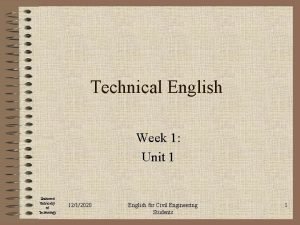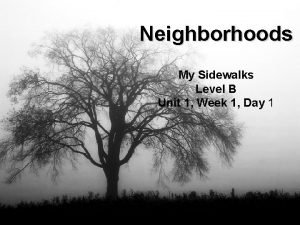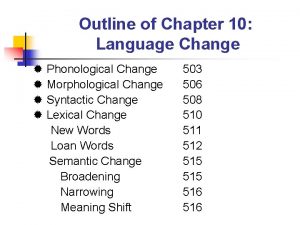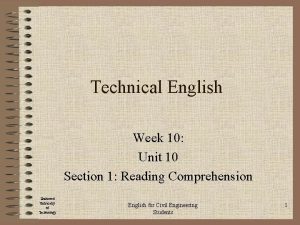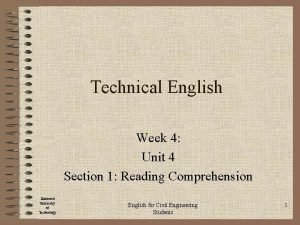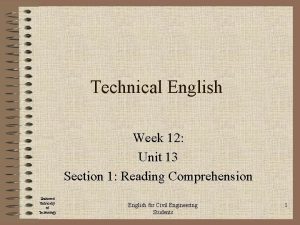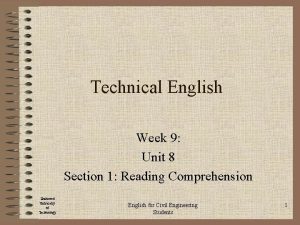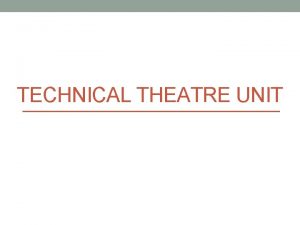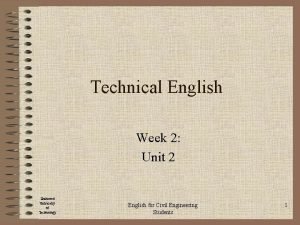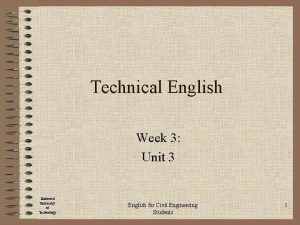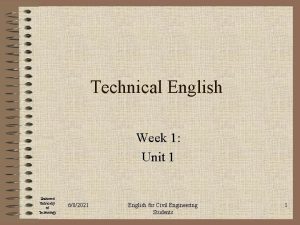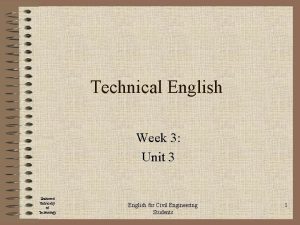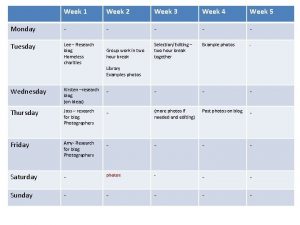Technical English Week 4 Unit 4 Section 2


















- Slides: 18

Technical English Week 4: Unit 4 Section 2: Further Reading Shahrood University of Technology English for Civil Engineering Students 1

Analysis of Building Frames for Lateral Loads • Building frames are subjected to lateral loads as well as to vertical loads. The necessity for careful attention to these forces increases as buildings become taller. Not only must a building have sufficient lateral resistance to prevent failure but it also must have sufficient resistance to deflecting to prevent injury to its various parts. English for Civil Engineering Students 2

• Another item of importance is the provision of sufficient lateral rigidity to give the occupants a feeling of safety. They might not have this feeling in tall buildings that have a great deal of lateral movement in times of high winds. There have been actual instances of occupants of the upper floors of tall buildings complaining of seasickness on very windy days. English for Civil Engineering Students 3

• Lateral loads can be taken care of by means of X or other types of bracing, by shear walls, or by moment resisting wind connections. Only the last of these three methods is considered. English for Civil Engineering Students 4

• Rigid frame buildings are highly indeterminate, and their analysis by the usual 'exact' methods is so lengthy as to make the approximate methods very popular. The total degree of indeterminacy of a building frame (internal and external) can be determined by considering it to consist of separate portals. One level of the rigid frame of Figure 4. 3 is broken down into a set of portals in Figure 4. 1. English for Civil Engineering Students 5

• Each of the portals is statically indeterminate to the third degree, and the total degree of indeterminacy of a building equals three times the number of individual portals in the frame. English for Civil Engineering Students 6

• Another method of obtaining the degree of indeterminacy is to assume that each of the girders is cut by an imaginary section. If these values shear, axial force, and moment are known in each girder, the free bodies produced can be analyzed by statics. The total degree of indeterminacy equals three times the number of girders. English for Civil Engineering Students 7

• The building frame of Figure 4. 3 is analyzed by two approximate methods in the pages to follow, and the results are compared with those obtained by one of the 'exact' methods considered in a later chapter of the book. English for Civil Engineering Students 8

• The dimensions and loading of the frame are selected to illustrate the methods involved while keeping the computations as simple as possible. There are nine girders in the frame, giving a total degree of indeterminacy of 27, and at least 27 assumptions will be needed to permit an approximate solution. English for Civil Engineering Students 9

• The reader should be aware that today with the availability of digital computers it is feasible to make 'exact' analyses in appreciably less time than that required to make approximate analyses (without the use of computers). The more accurate values obtained permit the use of smaller members. The results of computer usage are money saving in analysis time and in the use of smaller members. English for Civil Engineering Students 10

• Today it is possible to analyze structures (such as tall buildings) that are statically indeterminate in minutes with hundreds or even thousands of simultaneous equations via the displacement method. The results for these highly indeterminate structures are far more accurate and more economically obtained than from approximate analyses. English for Civil Engineering Students 11

• The two methods considered here are the portal and cantilever methods. These methods have been used in so many successful building designs that they were almost the unofficial standard procedure for the design profession before the advent of modern computers. No consideration is given in either of these methods to the elastic properties of the members. English for Civil Engineering Students 12

• These omissions can be very serious in unsymmetrical frames and in very tall buildings. To illustrate the seriousness of the matter, the changes in member sizes are considered in a very tall building. In such a building there will probably not be a great deal of change in beam sizes from the top floor to the bottom floor. For the same loadings and spans the changed sizes would be due to the large wind moments in the lower floors. English for Civil Engineering Students 13

• The change, however, in column sizes from top to bottom would be tremendous. The result is that the relative sizes of columns and beams on the top floors are entirely different from the relative sizes on the lower floors. When this fact is not considered, it causes large errors in analysis. English for Civil Engineering Students 14

• In both the portal and cantilever methods, the entire wind loads are assumed to be resisted by the building frames, with no stiffening assistance from the floors, walls, and partitions. Changes in length of girders and columns are assumed to be negligible. They, however, are not negligible in tall slender buildings the height of which is five or more times the least horizontal dimension. English for Civil Engineering Students 15

• If the height of a building is roughly five or more times its least lateral dimension, it is generally felt that a more precise method of analysis should be used than the portal or cantilever methods. There are several excellent approximate methods which make use of the elastic properties of the structures and which give values closely approaching the results of the 'exact' methods. These include the factor method, the Witmer method of K percentages, and the Spurr method. English for Civil Engineering Students 16

• Should an 'exact' method be desired, the slope deflection method and the moment distribution method are available. If the slope deflection procedure is used, the designer will have the problem of solving a large number of simultaneous equations. The problem is not so serious, however, if one has access to a digital computer. English for Civil Engineering Students 17

End of Unit 4 English for Civil Engineering Students 18
 Week by week plans for documenting children's development
Week by week plans for documenting children's development Si vs english units
Si vs english units English 2 quarter 4 week 6
English 2 quarter 4 week 6 English 9 quarter 2 week 3
English 9 quarter 2 week 3 English week
English week English week objectives
English week objectives Unit 10, unit 10 review tests, unit 10 general test
Unit 10, unit 10 review tests, unit 10 general test List of things a to z
List of things a to z Diving suit
Diving suit Unit 5 week 4
Unit 5 week 4 Asd simplified technical english
Asd simplified technical english Technical communication in english
Technical communication in english Section view
Section view Unit 4 common specialist technical principles answers
Unit 4 common specialist technical principles answers Speak theme
Speak theme Spoken english and broken english
Spoken english and broken english Phonological change examples
Phonological change examples Father of english drama
Father of english drama Old english vs modern english
Old english vs modern english




